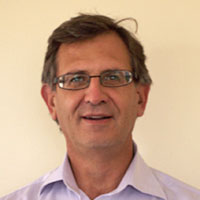As the saying goes, a week is a long time in politics, while three months is an eternity. Since the last edition of GPSpeak the Coalition's second proposal for changes to GP Medicare funding has come and gone. We also have a new Minister for Health, Sussan Ley, whom we wish well in this challenging portfolio.
The proposal to increase the minimum length for a standard consultation from 5 to 10 minutes took the profession by surprise. While the average "Level B" GP consultation is 14 minutes, 25 per cent are less than 10 minutes. The government’s aim was to eliminate so-called "6-minute medicine" but the proposal contained several potentially adverse effects for general practice.
Firstly, it would have a significant impact on joint GP/nursing care, making dressings, vaccinations and in-house pathology testing uneconomical.
Next, it would reward discontinuous care by disadvantaging GPs who are familiar with their own patients' health issues. The time spent by a GP with a new patient with complex needs easily extends the consultation time from 6 to over 10 minutes for even relatively simple problems. The resulting decrease in the supply of available consultations on any given day would extend GP waiting times.
Thirdly, the $5.00 cut in the rebate for all but health care card holders and pensioners would have a pronounced effect on GPs' incomes. This loss would be most marked for GPs who own their own practice since most practice costs are fixed. Who in the community would wish to see their incomes slashed?
Since dropping the proposed changes to Medicare, Minister Ley has embarked on a series of meetings with doctors and communities around the country. She has identified four principles:
- Protecting Medicare for the long-term
- Ensuring bulk billing remains for vulnerable and concessional patients
- Maintaining our high quality care and treatment for all Australians
- Sending a price signal of a modest co-payment into the health system for those who have the capacity to pay.
While these four principles are laudable, it is the last that is the most controversial. Unlike other groups representing doctors, the AMA agrees with the government on this point. It argues that any co-payment should be cost neutral but the government is looking to reduce GP Medicare expenditures by several billion dollars over the next few years.
The AMA is frequently criticised as being just a union for doctors and is often a lonely voice in financial health care discussions but at least on this matter it can count on the avid support of 0.1% of the Australian population.
Discussions and negotiations appear likely to continue for a while, although it is currently tipped that the 2015-16 Budget to be announced in May will contain a co-payment and a freeze on Medicare rebates from 1 July 2015.
In this issue, GPSpeak congratulates Associate Professor Austin Curtin on being chosen as the Australia Day Lismore Citizen of the Year 2015. The award recognises this dedicated surgeon’s commitment to his patients, our local hospitals and the community.
Congratulations, too, to Rev. Dorothy Harris-Gordon, the City of Lismore’s Debra Rhodes Aboriginal Citizen of the Year. Dorothy has given marvellous service to the community in so many ways, going above and beyond the normal call of duty to help many people in need.
We also recognise the labour of love by retired North Coast orthopaedic surgeon, Neil Thompson. Over the last three years Neil has been painstakingly researching the history of the medical practitioners in the Richmond Valley. "Sawbones, Saddle Burns and Soothing Balms" provides glimpses into the changing nature of medical care over the last 150 years. My only reservation with this book is that in covering the period 1866 to 1986 Neil has made me "history".
The work of two other retired health professionals is also honoured. The late Calder Chaffey retired from general practice in Dapto and travelled north to Wollongbar in 1986. A keen botanist, he – and an enthusiastic team of volunteers - instigated the founding of the Lismore Rainforest Botanic Gardens. Members of the public are welcome, and attending a guided tour is a thrill for any subtropical gardener.
Retired dentist, John Niven, ably assisted by his wife Helen, have run dental clinics in remote parts of Nepal for the last three years. Travelling on dangerous dirt roads and operating with basic equipment would be more familiar to a health practitioner of 1866 than modern day counterparts.
With the northern winter drawing to a close, John and Helen are about to return to their Himalayan village clinics where again they will be warmly welcomed. We are all familiar with the work of ophthalmologist, the late Fred Hollows, and this story has a similar setting. There’s something about the mountains… After reading our cover story you might decide to give them a helping hand.
GP Speak wishes the Nivens God’s speed and a safe journey. We also hope that 2015 will be a healthy and productive year for all our readers.
















